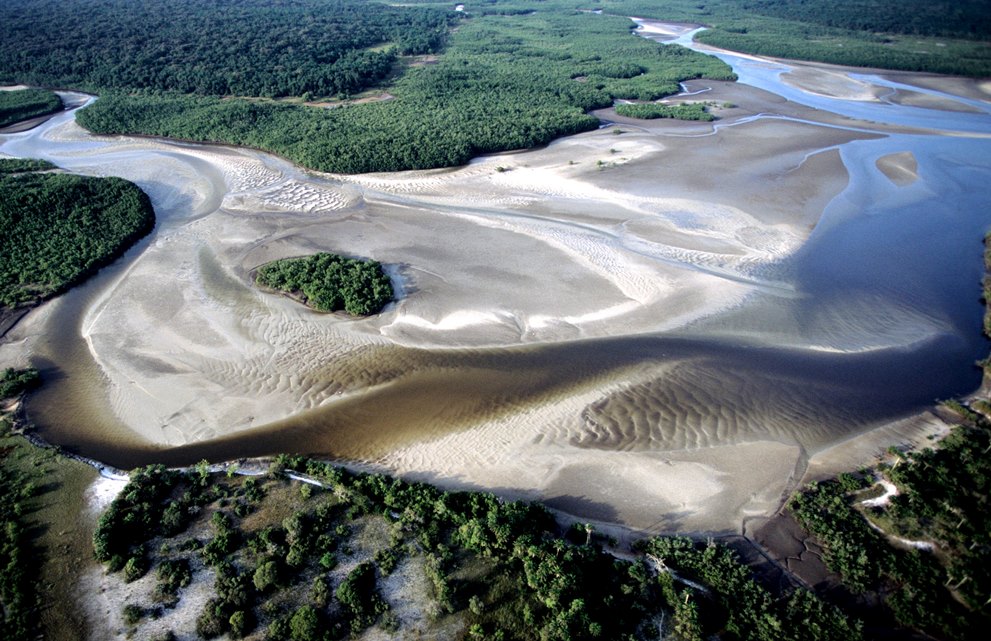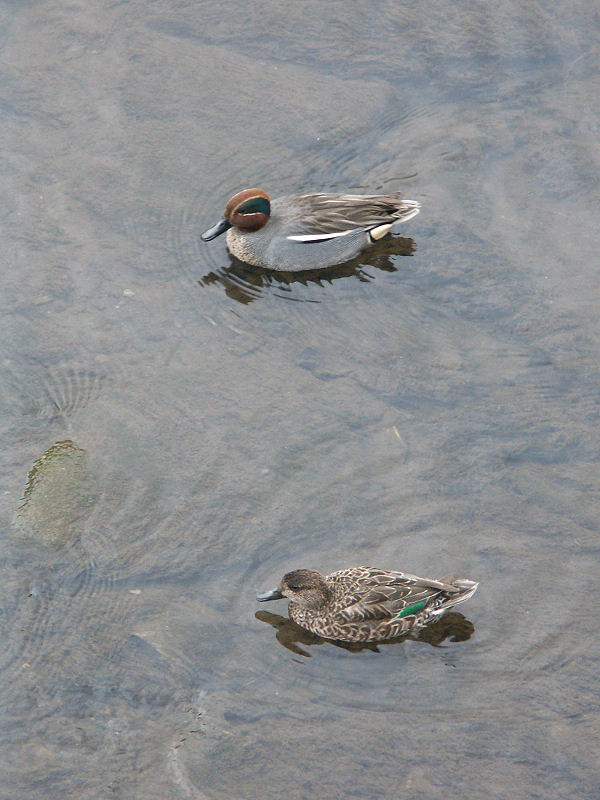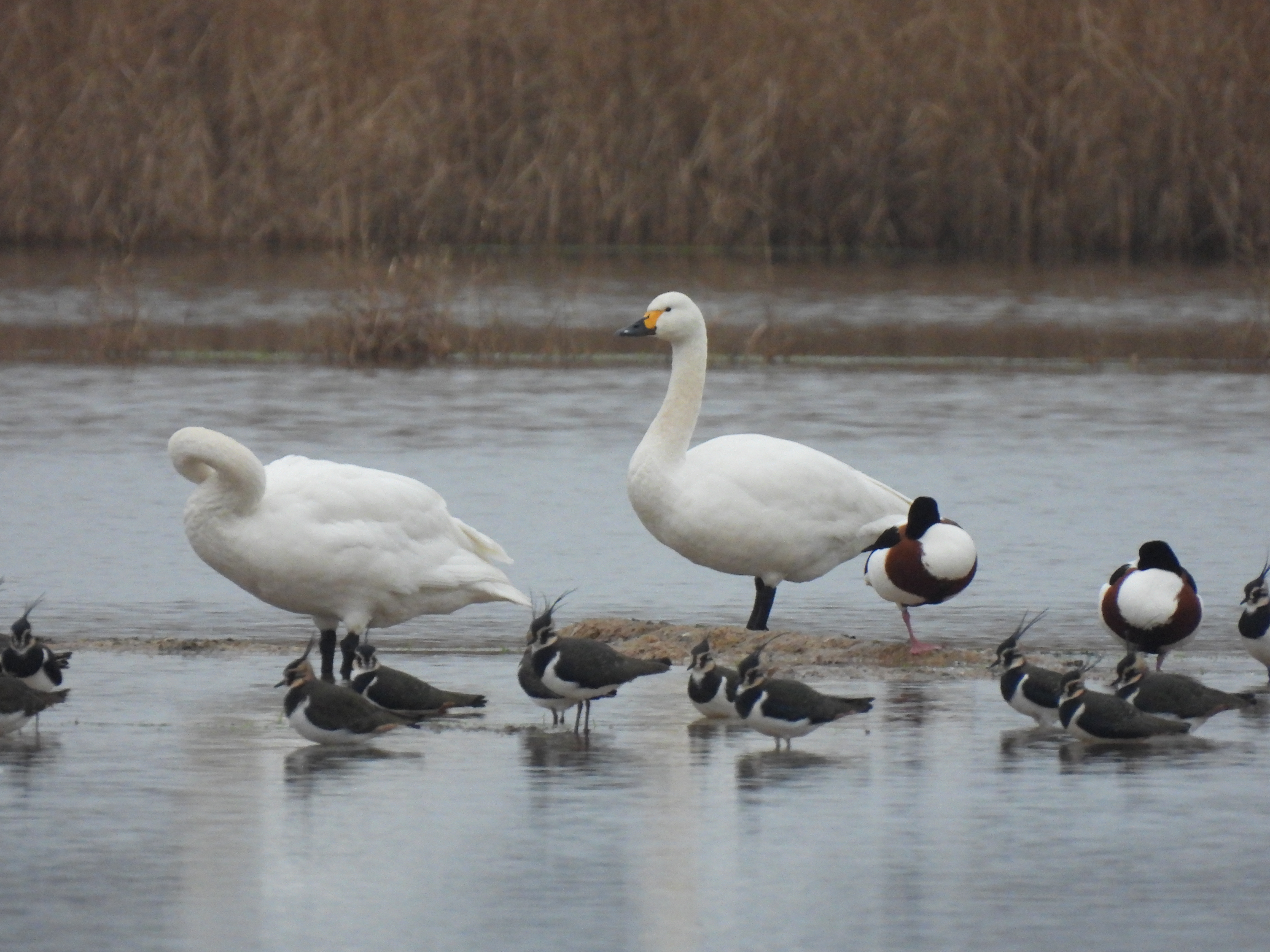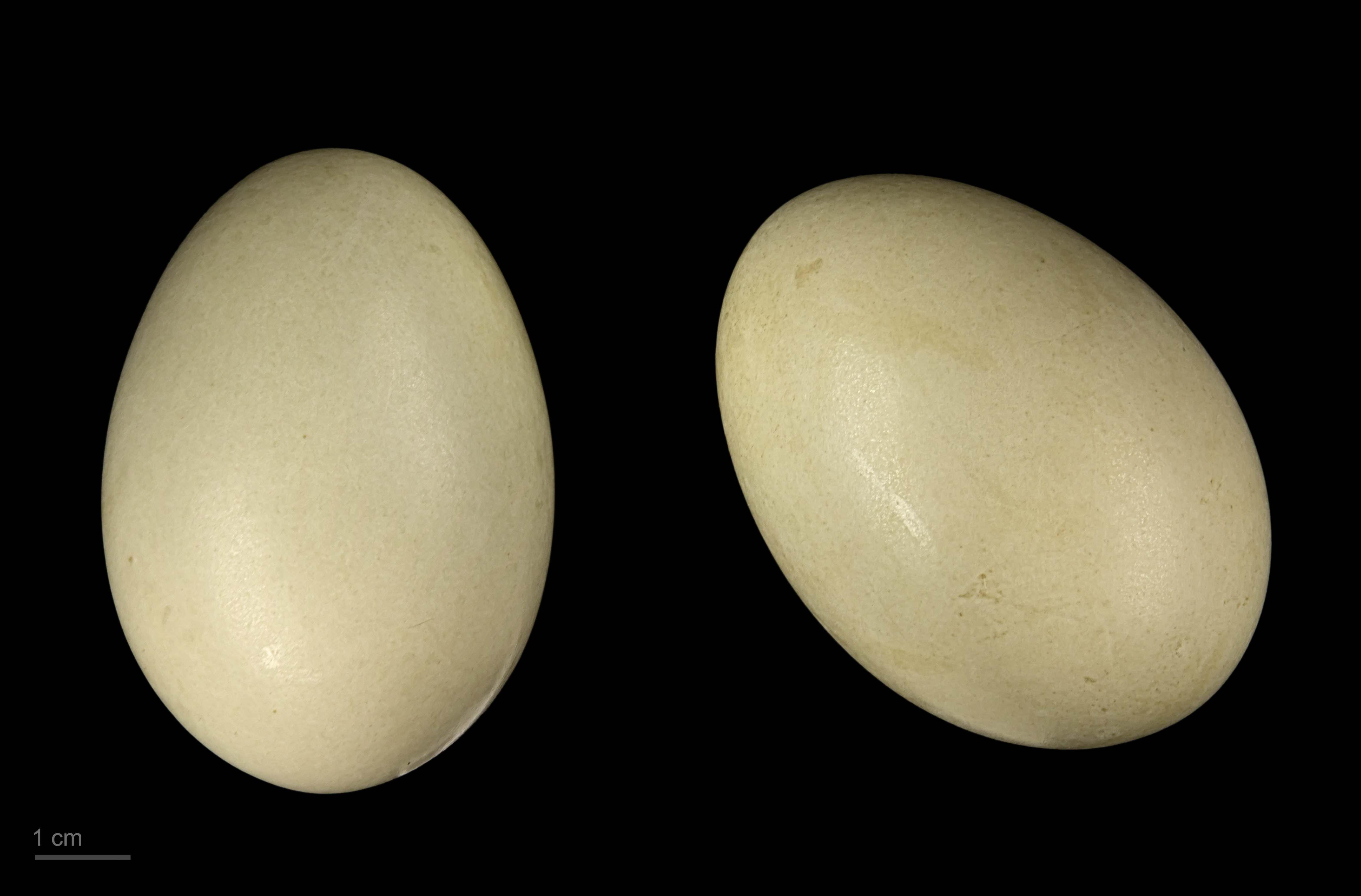|
Ouse Washes
Ouse Washes is a linear biological Site of Special Scientific Interest stretching from near St Ives, Cambridgeshire, St Ives in Cambridgeshire to Downham Market in Norfolk, England. It is also a Ramsar site, Ramsar internationally important wetland site, a Special Protection Area for birds, a Special Area of Conservation and a Nature Conservation Review site, Grade I. An area of between March, Cambridgeshire, March and Ely, Cambridgeshire, Ely is managed by the Wildlife Trust for Bedfordshire, Cambridgeshire and Northamptonshire and another area near Chatteris is managed by the Royal Society for the Protection of Birds. The Wildfowl & Wetlands Trust manages another area near Welney. The site lies between the Old Bedford River in the north-west and the New Bedford River in the south-east. The Washes are a flood storage area and are often under water in the winter. It is internationally significant for wintering and breeding wildfowl and waders, especially Anas crecca, teal, Ana ... [...More Info...] [...Related Items...] OR: [Wikipedia] [Google] [Baidu] [Amazon] |
Ramsar Convention
The Ramsar Convention on Wetlands of International Importance Especially as Waterfowl Habitat is an international treaty for the conservation and sustainable use of Ramsar site, Ramsar sites (wetlands). It is also known as the Convention on Wetlands. It is named after the city of Ramsar, Mazandaran, Ramsar in Iran, where the convention was signed in 1971. Every three years, representatives of the contracting parties meet as the Ramsar Convention#Conference of the Contracting Parties, Conference of the Contracting Parties (COP), the policy-making organ of the wetland conservation, convention which adopts decisions (site designations, resolutions and recommendations) to administer the work of the convention and improve the way in which the parties are able to implement its objectives. In 2022, COP15 was held in Montreal, Canada. List of wetlands of international importance The list of wetlands of international importance included 2,531 Ramsar site, Ramsar sites in Februa ... [...More Info...] [...Related Items...] OR: [Wikipedia] [Google] [Baidu] [Amazon] |
Anas Crecca
The Eurasian teal (''Anas crecca''), common teal, or Eurasian green-winged teal is a common and widespread duck that breeds in temperate Eurosiberia and migrates south in winter. The Eurasian teal is often called simply the teal due to being the only one of these small dabbling ducks in much of its range. The bird gives its name to the blue-green colour teal. It is a highly gregarious duck outside the breeding season and can form large flocks. It is commonly found in sheltered wetlands and feeds on seeds and aquatic invertebrates. The North American green-winged teal (''A. carolinensis'') was formerly (and sometimes is still) considered a subspecies of ''A. crecca''. Taxonomy The Eurasian teal belongs to the "true" teals, a group of small ''Anas'' dabbling ducks closely related to the mallard (''A. platyrhynchos'') and its relatives; that latter group in fact seems to have evolved from a true teal. It forms a superspecies with the green-winged teal and the speckle ... [...More Info...] [...Related Items...] OR: [Wikipedia] [Google] [Baidu] [Amazon] |
Francis Russell, 4th Earl Of Bedford
Francis Russell, 4th Earl of Bedford PC (1587 – 9 May 1641) was an English nobleman and politician. He built the square of Covent Garden, with the piazza and St Paul's Church, employing Inigo Jones as his architect. He is also known for his pioneering project to drain The Fens of Cambridgeshire. Early life He was the only sonCollins, Arthur''The Peerage of England; Containing a Genealogical and Historical Account of All the Peers of that Kingdom Etc. Fourth Edition, Carefully Corrected, and Continued to the Present Time'' Volume 1, pages 258–278. Woodfall, H et al.1768 of William Russell, 1st Baron Russell of Thornhaugh and his wife Elizabeth Long, to which barony he succeeded in August 1613. For a short time previously he had been Member of Parliament for the borough of Lyme Regis. In 1623 he was made Lord Lieutenant of Devon and on 3 May 1627 became Earl of Bedford on the death of his cousin Edward Russell, 3rd Earl of Bedford. In 1621 Russell was one of the thir ... [...More Info...] [...Related Items...] OR: [Wikipedia] [Google] [Baidu] [Amazon] |
Charter
A charter is the grant of authority or rights, stating that the granter formally recognizes the prerogative of the recipient to exercise the rights specified. It is implicit that the granter retains superiority (or sovereignty), and that the recipient admits a limited (or inferior) status within the relationship, and it is within that sense that charters were historically granted, and it is that sense which is retained in modern usage of the term. In early medieval Britain, charters transferred land from donors to recipients. The word entered the English language from the Old French ', via -4; we might wonder whether there's a point at which it's appropriate to talk of the beginnings of French, that is, when it wa ... ', via Latin ', and ultimately from Ancient Greek">Greek (', meaning "layer of papyrus"). It has come to be synonymous with a document that sets out a grant of rights or privileges. Other usages The term is used for a special case (or as an exception) of an ... [...More Info...] [...Related Items...] OR: [Wikipedia] [Google] [Baidu] [Amazon] |
Charles I Of England
Charles I (19 November 1600 – 30 January 1649) was King of Kingdom of England, England, Kingdom of Scotland, Scotland, and Kingdom of Ireland, Ireland from 27 March 1625 until Execution of Charles I, his execution in 1649. Charles was born into the House of Stuart as the second son of King James VI of Scotland, but after his father inherited the English throne in 1603, he moved to England, where he spent much of the rest of his life. He became heir apparent to the kingdoms of England, Scotland, and Ireland in 1612 upon the death of his elder brother, Henry Frederick, Prince of Wales. An unsuccessful and unpopular attempt to marry him to Infanta Maria Anna of Spain culminated in an eight-month visit to Habsburg Spain, Spain in 1623 that demonstrated the futility of the marriage negotiation. Two years later, shortly after his accession, he married Henrietta Maria of France. After his accession in 1625, Charles quarrelled with the English Parliament, which sought to curb his ro ... [...More Info...] [...Related Items...] OR: [Wikipedia] [Google] [Baidu] [Amazon] |
Marsh
In ecology, a marsh is a wetland that is dominated by herbaceous plants rather than by woody plants.Keddy, P.A. 2010. Wetland Ecology: Principles and Conservation (2nd edition). Cambridge University Press, Cambridge, UK. 497 p More in general, the word can be used for any low-lying and seasonally waterlogged terrain. In Europe and in agricultural literature low-lying meadows that require draining and embanked polderlands are also referred to as marshes or marshland. Marshes can often be found at the edges of lakes and streams, where they form a transition between the aquatic and terrestrial ecosystems. They are often dominated by grasses, rushes or reeds. If woody plants are present they tend to be low-growing shrubs, and the marsh is sometimes called a carr. This form of vegetation is what differentiates marshes from other types of wetland such as swamps, which are dominated by trees, and mires, which are wetlands that have accumulated deposits of acidic peat. Marshes ... [...More Info...] [...Related Items...] OR: [Wikipedia] [Google] [Baidu] [Amazon] |
The Fens
The Fens or Fenlands in eastern England are a naturally marshy region supporting a rich ecology and numerous species. Most of the fens were drained centuries ago, resulting in a flat, dry, low-lying agricultural region supported by a system of drainage channels and man-made rivers (Ditch, dykes and drains) and automated pumping stations. There have been unintended consequences to this reclamation, as the land level has continued to sink and the dykes have been built higher to protect it from flooding. ''Fen'' is the local term for an individual area of marshland or former marshland. It also designates the type of marsh typical of the area, which has pH, neutral or alkaline water and relatively large quantities of dissolved minerals, but few other plant nutrition, plant nutrients. The Fens are a National Character Area, based on their landscape, biodiversity, geodiversity and economic activity. The Fens lie inland of the Wash, and are an area of nearly in the south east of L ... [...More Info...] [...Related Items...] OR: [Wikipedia] [Google] [Baidu] [Amazon] |
Peat
Peat is an accumulation of partially Decomposition, decayed vegetation or organic matter. It is unique to natural areas called peatlands, bogs, mires, Moorland, moors, or muskegs. ''Sphagnum'' moss, also called peat moss, is one of the most common components in peat, although many other plants can contribute. The biological features of sphagnum mosses act to create a habitat aiding peat formation, a phenomenon termed 'habitat manipulation'. Soils consisting primarily of peat are known as histosols. Peat forms in wetland conditions, where flooding or stagnant water obstructs the flow of oxygen from the atmosphere, slowing the rate of decomposition. Peat properties such as organic matter content and saturated hydraulic conductivity can exhibit high spatial heterogeneity. Peatlands, particularly bogs, are the primary source of peat; although less common, other wetlands, including fens, pocosins and peat swamp forests, also deposit peat. Landscapes covered in peat are home to sp ... [...More Info...] [...Related Items...] OR: [Wikipedia] [Google] [Baidu] [Amazon] |
North Sea
The North Sea lies between Great Britain, Denmark, Norway, Germany, the Netherlands, Belgium, and France. A sea on the European continental shelf, it connects to the Atlantic Ocean through the English Channel in the south and the Norwegian Sea in the north. It is more than long and wide, covering . It hosts key north European shipping lanes and is a major fishery. The coast is a popular destination for recreation and tourism in bordering countries, and a rich source of energy resources, including wind energy, wind and wave power. The North Sea has featured prominently in geopolitical and military affairs, particularly in Northern Europe, from the Middle Ages to the modern era. It was also important globally through the power northern Europeans projected worldwide during much of the Middle Ages and into the modern era. The North Sea was the centre of the Viking Age, Vikings' rise. The Hanseatic League, the Dutch Golden Age, Dutch Republic, and Kingdom of Great Britain, Brita ... [...More Info...] [...Related Items...] OR: [Wikipedia] [Google] [Baidu] [Amazon] |
Glacial Period
A glacial period (alternatively glacial or glaciation) is an interval of time (thousands of years) within an ice age that is marked by colder temperatures and glacier advances. Interglacials, on the other hand, are periods of warmer climate between glacial periods. The Last Glacial Period ended about 15,000 years ago. The Holocene is the current interglacial. A time with no glaciers on Earth is considered a Greenhouse and icehouse Earth, greenhouse climate state. Quaternary Period Within the Quaternary, which started about 2.6 million years before present, there have been a number of glacials and interglacials. At least eight glacial cycles have occurred in the last 740,000 years alone. Changes in atmospheric and associated radiative forcing were among the primary drivers of globally cold glacial and warm interglacial climates, with changes in ocean physical circulation, biological productivity and seawater acid-base chemistry likely causing most of the recorded changes Penul ... [...More Info...] [...Related Items...] OR: [Wikipedia] [Google] [Baidu] [Amazon] |
Bewick's Swan
The tundra swan (''Cygnus columbianus'') is a small swan of the Holarctic. The two taxa within it are usually regarded as conspecific, but are also sometimes split into two species: Bewick's swan (''Cygnus bewickii'') of the Palaearctic and the whistling swan (''C. columbianus'') proper of the Nearctic. Birds from eastern Russia (roughly east of the Taymyr Peninsula) are sometimes separated as the subspecies ''C. c. jankowskii'', but this is not widely accepted as distinct, with most authors including them in ''C. c. bewickii''. Tundra swans are sometimes separated in the subgenus ''Olor'' together with the other Arctic swan species. Bewick's swan was named in 1830 by William Yarrell after the engraver Thomas Bewick, who specialised in illustrations of birds and animals. ''Cygnus'' is the Latin for "swan", and '' columbianus'' comes from the Columbia River, the type locality. Description ''C. columbianus'' is the smallest of the Holarctic swans, at in length, in wingspan ... [...More Info...] [...Related Items...] OR: [Wikipedia] [Google] [Baidu] [Amazon] |
Aythya Ferina
The common pochard (; ''Aythya ferina''), known simply as pochard in the United Kingdom, is a medium-sized diving duck in the family Anatidae. It is widespread across the Palearctic. It breeds primarily in the steppe regions of Scandinavia and Siberia, and winters further south and west. Taxonomy and systematics Swedish taxonomist Carl Linnaeus first assigned a scientific name to the common pochard in the tenth edition of his landmark treatise Systema Naturae; this was the first edition which included such names. He called the duck ''Anas ferina''. In 1822, German zoologist Friedrich Boie created the genus ''Aythya'' for various diving ducks, and moved the common pochard to that new genus. Uptake of ''Aythya'' as the genus for the common pochard was mixed for much of the next century, with some authors leaving the duck in the genus ''Anas'' or assigning it to various other now-defunct genera instead. The common pochard is considered a superspecies with the canvasback. In the pas ... [...More Info...] [...Related Items...] OR: [Wikipedia] [Google] [Baidu] [Amazon] |









